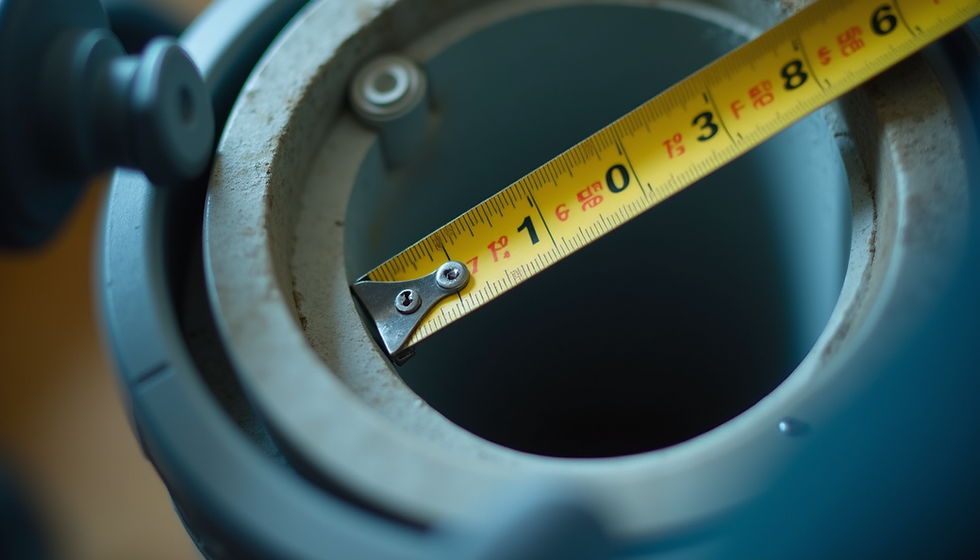Identifying Wiring Issues in Two-Piece Heaters Through Voltage and Visual Checks
- Heat Tech Systems
- Jul 23
- 3 min read
When dealing with two-piece heaters, ensuring they function correctly is essential for both performance and safety. A common challenge for technicians is identifying whether these heaters are wired incorrectly. In this post, we will explore two main methods to check the wiring of two-piece heaters: measuring voltage across each heater half and conducting a visual inspection of the wiring. Understanding these techniques can help pinpoint potential issues before they escalate into significant problems.
Understanding the Voltage Measurement - Two-Piece Heaters
One of the first steps in assessing the wiring of a two-piece heater is measuring the voltage across each heater half. This measurement is critical because it should match the specifications stamped on the heater. For instance, if your heater is rated at 120V, both halves should measure 120V when tested.
If, during testing, you find that one or both halves show only 60V, this indicates that the heaters are wired in series instead of in parallel. This wiring mistake can drastically affect the heater's performance.
When a heater is wired in series, the wattage output drops to only 25% of the stamped wattage. For a heater rated at 1500W, it would only operate at approximately 375W. This significant drop in efficiency not only reduces heating capacity but can lead to overheating and potential fire hazards.
Visual Inspection of Heater Wiring
In addition to measuring voltage, visually inspecting the wiring is another vital step. Start by ensuring that one terminal of each heater half is connected correctly to the black 120V wiring, while the other end should connect to the white neutral wiring.
This simple inspection can reveal obvious mistakes that could lead to heating failures or safety hazards. For example, poor connections over time increase electrical resistance, which can cause components to overheat and create dangerous situations.
If you find any issues during this visual check, it is best to consult a professional electrician or technician to fix the wiring before proceeding.
What to Check Next If Voltage is Correct
If the voltage measurements are correct, the next step is to turn off the power and disconnect the leads going to one end of the heater. After that, measure the resistance of each heater half.
To determine the expected resistance, you can use the formula:
R = V² / W
Here, V is the voltage stamped on the heater (i.e., 120V), and W is the wattage (i.e., 1500W).
Using these values, the expected resistance should be approximately 9.6 ohms per heater half. If your resistance readings are significantly different, it could indicate a defect, such as a short circuit or damage to the heating element.
Considering the Type of Heater
After performing the necessary voltage and resistance checks, it is crucial to identify the type of heater you are working on. In some cases, technicians discover that the heater is a one-piece unit instead of a two-piece heater.
This realization changes the diagnostic approach. For instance, one telltale sign during initial evaluations is whether the LED light on the controller stays ON continuously.
Importance of LED Indicators
Understanding the LED light's status is vital for troubleshooting. If it remains ON throughout the heating process, it suggests that the heater is functioning correctly.
However, if the light goes OFF intermittently, this may signal that the heater is not operating correctly. Such fluctuations can indicate a programming error with the temperature controller, which requires further inspection.
In a recent case shared by a technician at a customer's facility, the temperature controller showed rapid spikes, reaching levels like 380°F, while the heater took 20 to 30 minutes to warm up fully. This discrepancy pointed to poor communication between the controller and the heater, emphasizing the need to inspect the controller's settings and connections carefully.
Ensuring Heater Safety and Efficiency
When managing two-piece heaters, identifying wiring issues early can significantly enhance safety and efficiency. By following the methods outlined in this post—measuring voltage, visually inspecting wiring, and understanding resistance—technicians can diagnose problems effectively, preventing hazardous situations or inefficient heating.
Regular checks focusing on safe practices can greatly improve the lifespan and performance of heating systems. Properly wired heaters not only operate more efficiently but also provide a more comfortable environment.
If at any time you feel unsure about performing checks or repairs, do not hesitate to contact a qualified electrician or technician. Remember, safety should always be your top priority when dealing with electrical appliances.




Comments